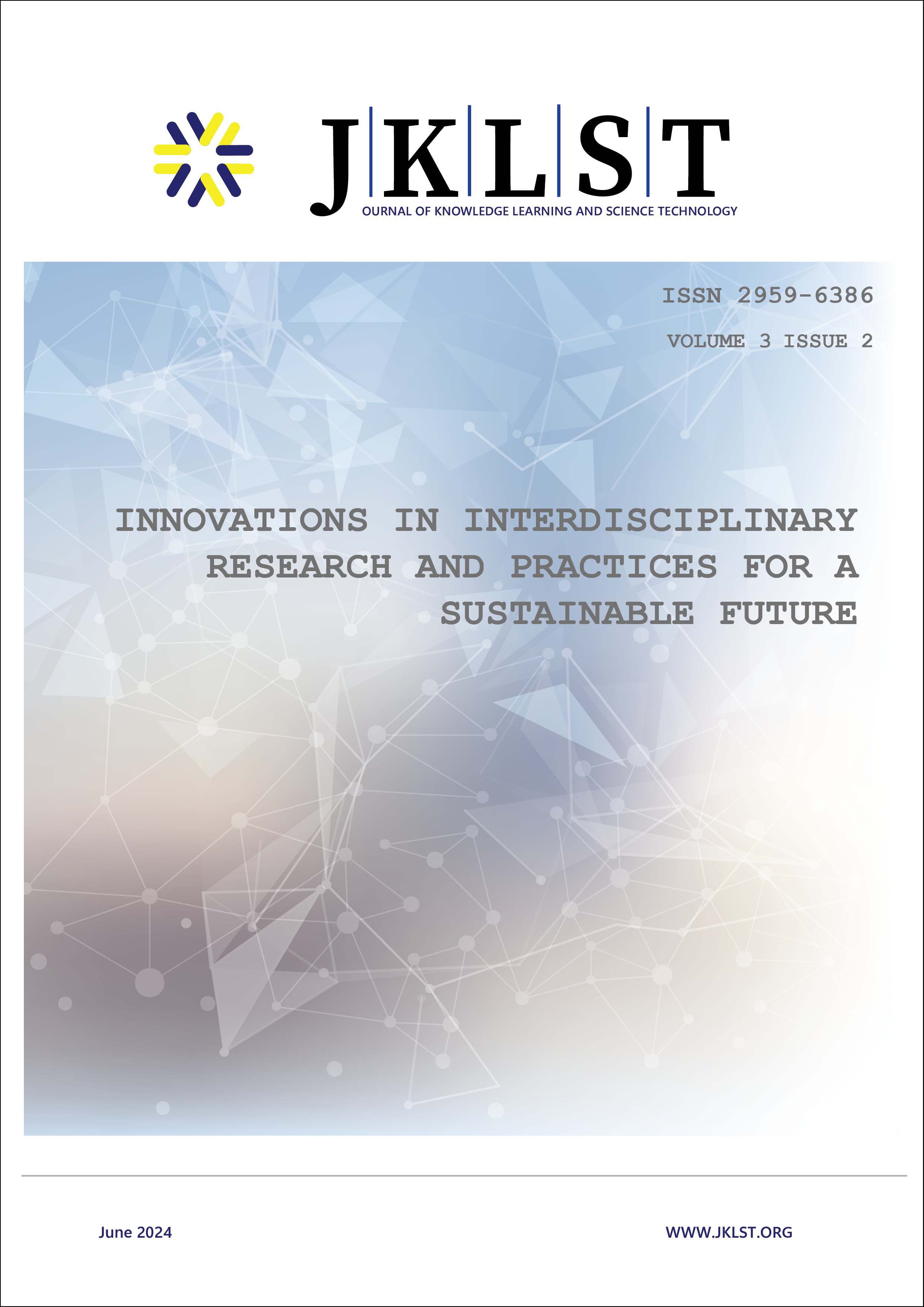Students’ and Teachers’ Perspectives and Performance of Pre-listening Activities in EFL Classes: A Study Case in Ho Chi Minh CityUniversity of Economics and Finance
DOI:
https://doi.org/10.60087/jklst.vol3.n2.p281Keywords:
pre-listening activities, perceptionx, attitudes, benefits , listening comprehensionAbstract
Pre-listening activity has a significant role in improving comprehension skills. The study investigates the benefits and the effects of pre-listening activities in facilitating the students’ listening comprehension in English as Foreign Language (EFL) classes. The research also examined the teachers’ performance of pre- listening activities as well as the students’ preferences for the activities. 103 freshmen in General English classes and 12 teachers participated in this study. Data were collected through questionnaires and then quantitatively and qualitatively analyzed. The findings indicated that pre-listening activities are believed to be significant in building confidence, generating interest, activating background or cultural knowledge, increasing input and greatly assisting comprehension. Accordingly, pedagogical implications as well as recommendations on how to employ pre-listening activities at the preparatory more effectively in the listening process will be provided.
Downloads
References
Buck, G. (2001). Assessing listening. Cambridge University Press.
Vandergrift, L. (2006). Second language listening: Listening ability or language proficiency? The Modern Language Journal, 90(1), 6–18. https://www.jstor.org/stable/3588811
Morley, J. (2001). Aural comprehension instruction: Principles and practices. In M. Celce-Murcia (Ed.), Teaching English as a second or foreign language (pp. 69–85). Heinle and Heinle.
Berne, J. E. (1995). How does varying pre-listening activities affect second language listening comprehension? Hispania, 78(1), 316–319. https://doi.org/10.2307/34548
Herron, C. (1994). An investigation of the effectiveness of using an advanced organizer to introduce video in the foreign language classroom. The Modern Language Journal, 78(2), 190–198. https://doi.org/10.1111/j.1540-4781.1994.tb02032.x
Rost, M. (2002). Teaching and researching listening. Longman.
Barjesteh, H., & Ghaseminia, M. (2023). Effects of pre-listening task types on the development of EFL learners’ listening comprehension ability. International Journal of Listening, 37(2), 156–170. https://doi.org/10.1080/10904018.2019.1654867
Karimi, F., Chalak, A., & Biria, R. (2019). Pedagogical utility of pre-listening activities for improving Iranian elementary EFL learners’ listening comprehension. International Journal of Instruction, 12(1), 1127–1140. https://doi.org/10.29333/iji.2019.1217a
Schmidt-Rinehart, B. C. (1994). The effects of topic familiarity on second language listening comprehension. The Modern Language Journal, 78(2), 179–189. https://doi.org/10.2307/3298
Vandergrift, L. (2006). Second language listening: Listening ability or language proficiency? The Modern Language Journal, 90(1), 6–18. https://doi.org/10.1111/j.1540-4781.2006.00381.x
Sui, H., & Wang, Y. (2005). On pre-listening activities. Sino-US English Teaching, 2(5).
Jia, L. (2010). How word recognition is affected by schema activation: An investigation through listening. Chinese Journal of Applied Linguistics, 33(4), 64–76. https://api.semanticscholar.org/CorpusID:6338168
Sadighi, F., & Zare, S. (2002). Is listening comprehension influenced by the background knowledge of the learners? A case study of Iranian EFL learners. The Linguistics Journal, 1(3), 110.
Goh, C. (2000). A cognitive perspective on language learners’ listening comprehension problems. System, 28(1), 55–75. https://doi.org/10.1016/S0346-251X(99)00060-3
Kelly, P. (1991). Lexical ignorance: The main obstacle to listening comprehension with advanced foreign language learners. International Review of Applied Linguistics in Language Teaching, 29(2), 135–149.
Sadat Madani, B., & Kheirzadeh, Sh. (2018). The impact of pre-listening activities on EFL learners' listening comprehension. International Journal of Listening, 1–15. https://api.semanticscholar.org/CorpusID:149972064
Chang, A. C.-S., & Read, J. (2006). The effects of listening support on the listening performance of EFL learners. TESOL Quarterly, 40(2), 375–397. https://doi.org/10.2307/40264527
Molavi, S., & Kuhi, D. (2018). A comparative study of the effects of three different pre-listening tasks at intermediate and advanced levels. Journal of Advances in English Language Teaching, 6(1), 1–16.
Farrokhi, F., & Modarres, V. (2012). The effects of two-task activities on improvement of Iranian EFL learners’ listening comprehension. Theory and Practice in Language Studies, 2(1), 144–150.
Pan, Y. C. (2012). Effects of multi-faceted lexical instruction on the TOEIC listening performance of Taiwanese EFL college students. International Journal of English Linguistics, 2, 71–79.
Jensen, C., & Hansen, C. (1995). The effect of prior knowledge on EAP listening-test performance. Language Testing, 12(1), 99–119. https://doi.org/10.1177/026553229501200106
Herron, C., Cole, H., & Linden, P. (1998). A comparison study of student retention of foreign language video: Declarative versus interrogative advance organizer. The Modern Language Journal, 82(2), 237–247. https://doi.org/10.1111/j.1540-4781.1998.tb01197.x
Chung, J. M. (2002). The effects of using two advance organizers with video texts for the teaching of listening in English. Foreign Language Annals, 35, 231–241.
Hui, L. (2010). Chinese cultural schema on education. Issues in Educational Research, 15(1), 17–36.
Rajaei, Z. (2015). The role of pre-listening activities on EFL learners’ listening comprehension. International Journal of Foreign Language Teaching and Research, 3(10), 35–43. https://api.semanticscholar.org/CorpusID:56300946
Nunan, D. (2007). Listening in language learning. Sino-US English Teaching, 1(6), 32–33.
Underwood, M. (1989). Teaching listening. Longman.
Brown, H. D. (1994). Principles of language learning and teaching. Prentice Hall.
Harmer, J. (2007). The practice of English language teaching (4th ed.). Longman.
Lingzhu, J. (2003). Listening activities for effective top-down processing. The Internet TESL Journal, 9(11).
Ellis, R. (1994). The study of second language acquisition. Oxford University Press. https://doi.org/10.17507/tpls.1208.05
Chiang, C. S., & Dunkel, P. (1992). The effect of speech modification, prior knowledge, and linguistic proficiency on EFL lecture learning. TESOL Quarterly, 26(2), 345–374.
Ur, P. (1984). Teaching listening comprehension. Cambridge University Press.
Rost, M. (1990). Listening in language learning. Longman.
Brown, S. (2001). Likert scale examples for surveys. ANR Program Evaluation, Iowa State University Extension.
Hasan, A. S. (2000). Learners' perceptions of listening comprehension problems. Language, Culture and Curriculum, 13(2), 137–153. https://doi.org/10.1080/0790831000866659
Downloads
Published
Issue
Section
License
Copyright (c) 2024 Journal of Knowledge Learning and Science Technology ISSN: 2959-6386 (online)

This work is licensed under a Creative Commons Attribution 4.0 International License.
©2024 All rights reserved by the respective authors and JKLST.









